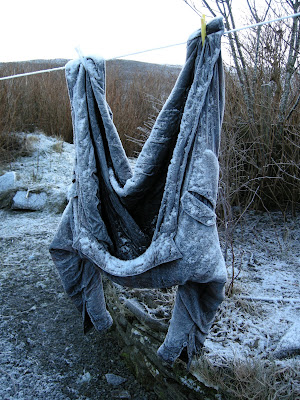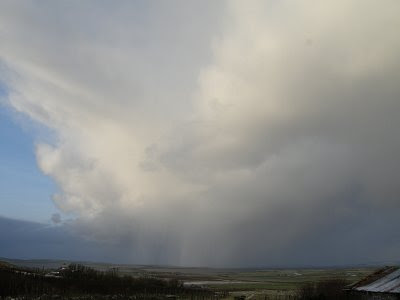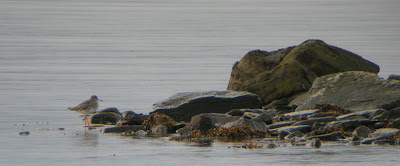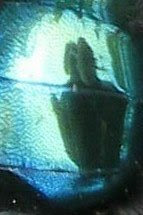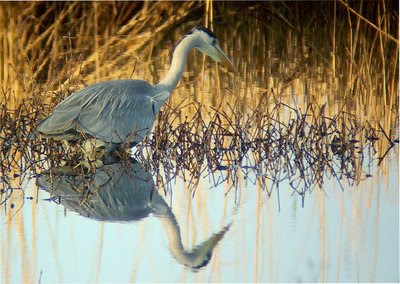The following is a summary of the sea bird report summary from the RSPB. If you are members of the society and part of the local members group then you will have all ready have been privy to this information. One of the advantages of being a member of the RSPB is the huge amount of up to date information you can draw on. Orkney is in the enviable position of having one of the highest memberships per head of population in the UK. There is all ways room for more though so why not phone the Stromness office and speak to Morag, she will be happy to give you advice on payment and sign you up.
Red Throated Diver
The season started poorly and the birds seemed in poor condition on their return to the county. Eventually they got going though. On Hoy for example 56 occupied sites produced 43 chicks from 32 nests. The same as 06 and better than 07. On the mainland things were poorer, 19 monitored pairs raised just eight chicks. At the main site seven pairs reared no chicks at all and there was evidence that the high level of Greylag goose activity had a detrimental effect.
Manx Shearwater.
15 calling birds were estimated in and around the only known colony.
Fulmar
Overall productivity seemed a bit higher at sites monitored this year
Gannet
The only sea bird that seems to be holding its own On Westray’s Noup Head colony the Apparently occupied nests(AON)from 106 in 2006 to 345 this summer an increase of 107%!!
Shag
Little solid data exists for shags in Orkney but one off visits to Swona and the Muckle Skerry suggested that productivity was down and the breeding season was late.
Arctic Skua
A very dismal year. 108 nests were monitored by Iain Maclean for RSPB and had a productivity of just 0.06. No young at all were reared in the study plots on Westray,Rousay,Mainland or Flotta with slightly more success on Stronsay,Eday and Papy. This probably reflects the lack of a food source(fish kleptoparasitised from Arctic Terns). This was also reflected in sightings of them hunting and eating song birds and Orkney voles. On Pappy they were seen eating Crowberry berries. All droppings around nest sites were found to contain the remains of beetles…desperate times.
Great Skua.
A strange situation it appeared to seasoned observers of the biggest colony on Hoy that numbers were in real decline yet at other sites there has been an increase over the last twelve years of 67% It is a possibility that the threat of cannibalism in high density areas due to the ongoing food shortages has driven the birds to redistribute to lower density areas
North Hill on Papa Westray did not to bad with 20 apparently occupied territories AOT’s reared 18 chicks. A healthy figure and comparable to that in 07.
Black Headed Gull
A poor season for them with the main colony at Mill dam Shap holding only 90 AON and failing completely. Most other colony’s also failed and dispersed. The most successful site was Boardhouse Loch where a colony was still thriving on 10th July.
Common Gull
Breeding success was varied but poor. Sandy Loch, Hoy had 78AON’s with 67 chicks raised and two colony on Eday produced only 3 chicks. Exceptionally dry conditions did not help as the ground was to dry for to long to be finding important earth worms. Colony’s were also prey to heavy predation from larger gulls and Bonxies leading to failures.
Herring Gull
Another gull species that had a variable season. At Burray Ness 100 adults were present and 39 nests were recorded from which 41 chicks were ringed. On Grass Holm20 pairs raised at least 15 chicks. It was a gloomier picture from other sites with few if any chicks raised.
Great Black Backed Gull
The largest decreases in this species were seen on Hoy. The once enormous colony at the Burn of Forse that once held one thousand birds contained only fifty adults. Further north at Stourdale a colony that once held 600 pairs only had15 AONs. Copansay held 335 AONs this year compared to 380 in 2000 a decline of 12%
Kittiwake
A whole colony count on Copinsay 4th June produced a total of 1881 AONs compared to 4364 in 2000 a decline of 57%
Detailed monitoring of five mainland sites resulted in 353 nests being observed and not a single chick was raised. Here and there a few chicks were raised and out on Muckle Skerry(28th June) things appeared to be going well with 127 nests with 46 with chicks. 55 had brooding or incubating adults, unfortunately the difficulty in accessing this colony made follow up visits impossible.
Arctic Tern
Once again this spices suffered a disastrous breeding season. By may birds were returning and settling down to breed but failure after failure occurred and colony’s right across the isles were abandoned by June The only reasonably successful site was on the rock stacks at Skiba Geo,Birsay. Here 80 adults were in attendance and reared 20 chicks.
Common Tern
The main colony on the old wooden pier at Lyness,Hoy held140 adults on may 22nd and 90 birds were attending nests but was soon abandoned soon after this date.
Sandwich Tern.
The only known colony at Well Park Papy held 46 adults on the 9th June but failed shortly after with no chicks reared.
Little Tern
13 Adults were at the regular site but only one chick is thought to have been raised. A pair that nested and laid on North Ron also failed.
Guillemot
This species continues to go down hill rapidly.
A whole colony count on June 4th gave a total of14593 adults compared to 19549 in 1999 a 25% decline.
Anecdotal evidence sugested that the large colony’s on Noup Head and Marwick Head were much depleted this year. Dennis Paice monitored 125 nest sites at Marwick and Mull Head and not a single one of these raised a chick. It was a similar story on Papa Westray’s Fowl Craig. No young were raised from the 221 adults counted on the cliffs.
Razorbill
This auk is also experiencing real problems.
A whole colony count of the Copinsay group on June 4th gave a total of only 201 adults. This compares to a total of 671 in 2000 a 70% decline and322 in 2005 a 38% decline.
On Fowl Craig Pappy a max of 31 adults were counted with only two chicks. It is not known if they fledged. On Swona 5th July 8 chicks were ringed compared to 72 in 1999.
Black Guillemot.
Counts were down slightly across the isles.
An important colony appears to be developing on Grass Holm. 100 adults were there on the 8th June when many nests were found while on 28th July 15 nests were found with mainly with broods of two.
Puffin
Few relevant data were collected in 2008 although 348 adults were counted on the Copinsay group on June 4th. The major colony on Sule Skerry was not visited this year.
Overall it looks like another year of decline in sea bird numbers with quite a few species suffering minimal breeding success. Auks and terns faired very poorly with Fulmars seeming to be holding their own along with Gannets. Bonxies looked poor on the ground but did surprisingly well away from the dense colony’s Red Throated Divers picked up after a slow start while the breeding success of the gull species was very variable although fairly poor.
Not a pretty picture.
The following pepole and orginisations are to be warmly thanked for their invaluable contributions to this report(that I have just skimed over in this summary)
Bob Adam, Bill Badger, Chris Bell, Chris Booth, Mike Cockram, Collin Corse, Lorna Dow, Kieth Fairclough, Mark Gurney, Paul Higson, Paul Hollinrake, Andy Knight, Allan Leitch, Iain Maclean, North Ron bird observatory, Barry O’Dowd, Dennis Paice, Ian Smith, Brian Ribbands, Lea Shields, Jim Williams, Stuart Williams, Tim Wootton….Not to mention Eric Meek for contributing and compiling it all.
Thanks to you one and all.



